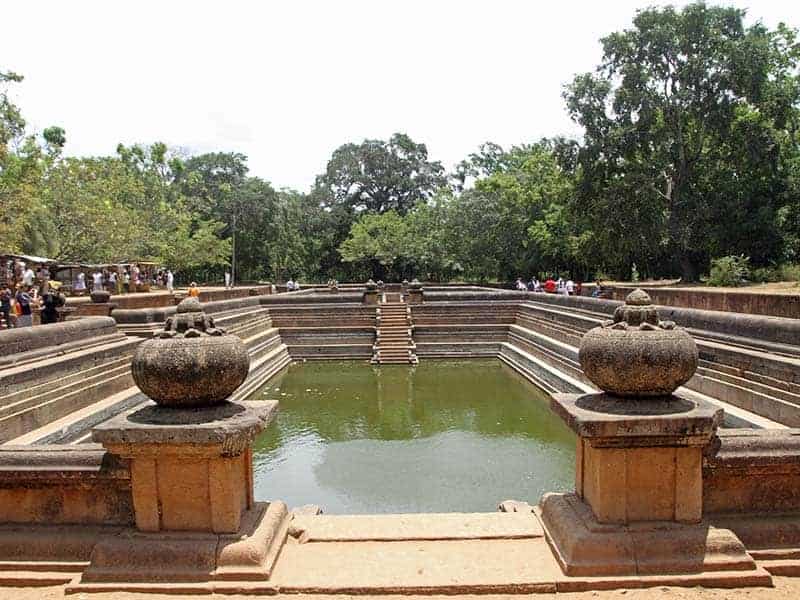Also known as the Twin Ponds for reasons that are rather obvious to all those who see the actual places and the pair of large water-filled pools, the Kuttam Pokuna site is part of the extensive Abhayagiri monastic complex of Anuradhapura’s middle years, during the 6th Century AD or so, probably under the patronage of King Aggabodhi I. They are part of the impressive hydraulic engineering systems of the island’s northern Sinhalese kingdom. The larger pool of the twin ponds is 132 feet long, while the smaller is thirty feet shorter and slightly shallower.
The northern pond, the smaller one was actually made first and the southern pool at a later stage. This shows us that the Abhayagiri complex, one of the greatest Mahayana centers in all of South Asia, was constantly being renovated and added to, even during ancient times.
The complex itself was first created during the 1st Century BC, under King Valagamba when he created the mighty stupa and monastery after ascending the throne after a rather troubled time. These ponds are among a great number of such historical places in Sri Lanka.
There are embankments and flights of steps on which the monks would have stood to bathe at the twin ponds. Water was distributed to many of these communal bathing pools via underground pipelines leading from larger reservoirs and networks of canals. There were also outlets to send extra water from the baths. Furthermore, there were even purification and filtration systems here that worked on incoming water underground for the monks to bathe in. Among the carvings around these two pools are those of granite pots called punkalasa. These symbolize prosperity and thus were found flanking various important buildings, including other monasteries and a number of palaces and royal and noble houses.
The great Sri Lankan archaeologist and historian Prof. Senarath Paranavithana was one of those most involved in working on these pools at the monastic complex. His findings before the renovation and restoration of the baths include carvings of a crab and a dancing woman, found at the bottom of the pools.
Written by Vasika Udurawane for Travel Lanka Compass



0 Comment